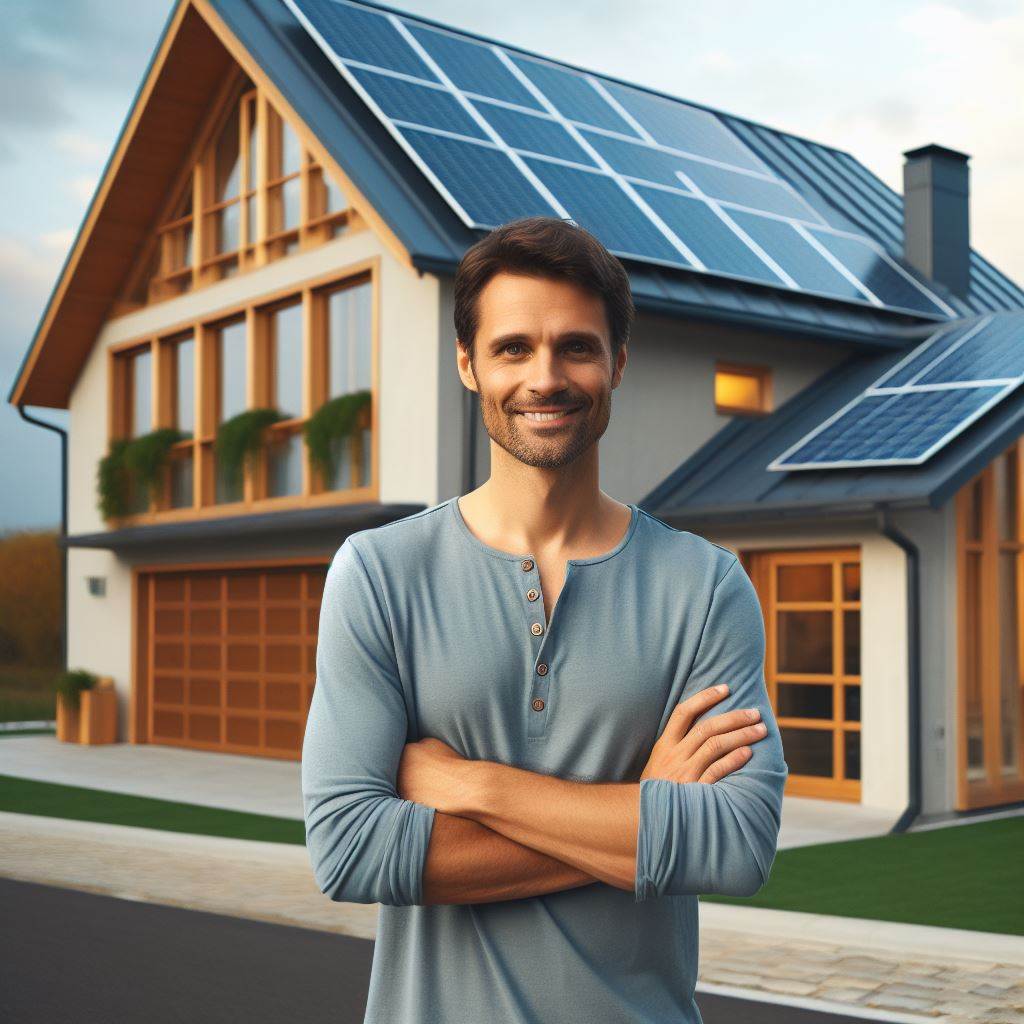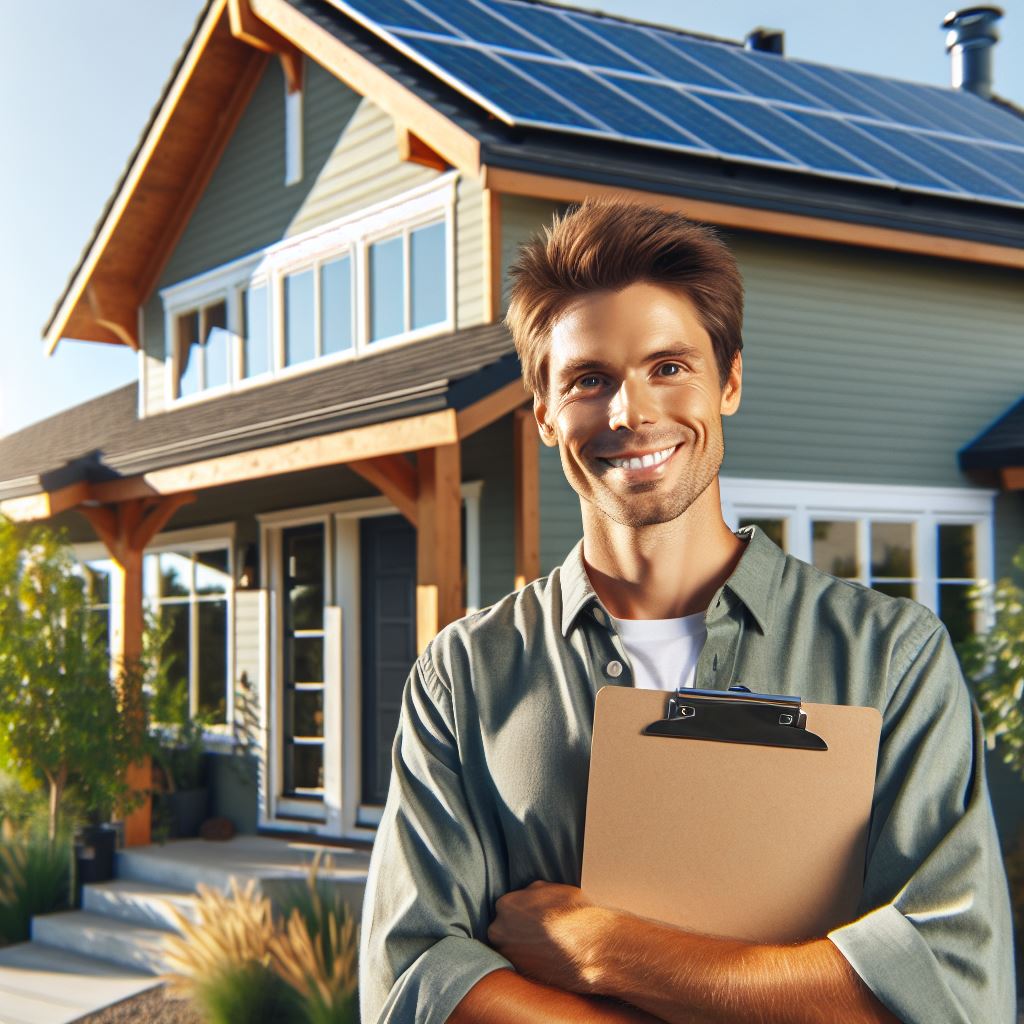Introduction
Prefab homes, also known as modular homes or factory-built homes, are houses that are constructed in a factory setting off-site.
These homes are then transported to the desired location for final assembly.
In recent years, the US market for prefab homes has been on the rise, driven by various factors such as affordability, sustainability, and customization options.
There has been a growing demand for prefab homes in the US due to their cost-effective nature.
Compared to traditional site-built homes, prefab homes offer lower costs, mainly because of the efficient construction process in a controlled factory environment.
Additionally, prefab homes are known for their energy efficiency and use of sustainable materials, appealing to environmentally conscious buyers.
Another factor contributing to the rise of prefab homes in the US market is the increased level of customization they offer.
Buyers can choose from a wide range of designs, floor plans, and finishes to create a home that suits their specific needs and preferences.
This level of customization makes prefab homes an attractive option for those looking for unique and personalized living spaces.
The purpose of this blog post is to provide an overview of the rising trends in the US prefab homes market.
By exploring the factors driving the market growth and the benefits of prefab homes, readers will gain valuable insights into this emerging housing trend.
Whether you are a prospective buyer or simply interested in the construction industry, this blog post aims to inform and inspire.
Join us as we delve into the exciting world of prefab homes and explore the rising US market trends.
The Benefits of Prefab Homes
Prefab homes offer several significant advantages over traditional construction methods.
These benefits range from cost-effectiveness to design flexibility, making them an attractive option for many homeowners.
Cost-effective construction
- Cost-effective construction: Prefab homes are known for their cost-effectiveness. This is primarily due to lower labor costs and efficient material use.
- Lower labor costs: Unlike traditional homes, prefab homes are constructed in factories. This controlled environment allows for streamlined processes and reduced reliance on manual labor.
As a result, labor costs decrease significantly, making prefab homes more affordable. - Efficient material use: Prefab homes utilize standardized components, ensuring accurate measurements and minimizing material waste.
With precise planning, manufacturers can optimize the use of materials, reducing expenses and environmental impact.
Faster construction timeline
Another advantage of prefab homes is their faster construction timeline.
This is beneficial for homeowners who want to minimize construction time and start enjoying their new home quickly.
- Reduction in project delays: Prefab homes are constructed within a factory setting, away from external factors such as weather conditions.
This controlled environment significantly reduces the risk of project delays caused by adverse weather or other unforeseen circumstances. - Quick assembly on-site: Unlike stick-built homes, which require extensive on-site construction, prefab homes arrive at the site partially or fully constructed.
This expedites the assembly process and shortens the overall construction time.
Design flexibility
Prefab homes offer a wide range of design possibilities, allowing homeowners to create a personalized living space that suits their unique preferences.
- Customizable options available: Buyers can choose from various customizable options, including floor plans, finishes, and fixtures.
This flexibility enables homeowners to create a home that reflects their individual style and needs. - Creative architectural possibilities: Prefab homes are not limited to traditional designs.
The modular nature of prefab construction allows for creative architectural possibilities, including contemporary and modern designs.
Homeowners can collaborate with architects to create unique, eye-catching structures.
In fact, prefab homes provide multiple benefits that appeal to both homeowners and builders.
The cost-effectiveness, faster construction timeline, and design flexibility make prefab homes an increasingly popular choice in the US market.
With advancements in technology and increased awareness of their advantages, prefab homes are likely to continue rising in popularity.
Read: Luxury Real Estate: 2024 Trends in the US
Growing Demand for Prefab Homes in the US
Increasing interest from Millennials
With an increasing interest from Millennials, rising popularity among retirees, and urbanization leading to housing shortages, the US market for prefab homes is experiencing significant growth.
Millennials, known for their financial challenges, are looking for affordable housing options that align with their sustainability preferences.
Prefab homes offer a solution by being cost-effective and environmentally friendly.
Additionally, the modern design concepts often associated with prefab homes appeal to the young generation’s aesthetic sense.
Rising popularity among retirees
Retirees, on the other hand, have different requirements when it comes to housing.
Many retirees are downsizing and prefer homes that cater to their changing needs.
Prefab homes can easily be customized to include features like single-level layouts and accessibility options, making them suitable for aging-in-place.
Moreover, these homes can be equipped with energy-efficient appliances, reducing utility bills for retirees on fixed incomes.
Urbanization and housing shortages
Furthermore, urbanization has led to housing shortages in many rapidly growing cities.
As populations increase, traditional construction methods struggle to keep up with the demand for housing.
Prefab homes, being built off-site, offer a quicker and more efficient solution.
This makes them an attractive option for urban dwellers who need housing solutions as quickly as possible.
Additionally, prefab homes are designed to make the most of limited space.
In densely populated areas where land is scarce, these homes can be built on smaller lots, allowing for more efficient use of available space.
The cost-effectiveness of prefab homes also makes them more affordable, addressing the financial constraints faced by many city dwellers.
In short, the growing demand for prefab homes in the US can be attributed to increasing interest from Millennials, rising popularity among retirees, and the need to meet housing demands in rapidly growing cities.
With their affordability, sustainability, and customizable features, prefab homes are an appealing option for a diverse range of home buyers.
Read: Solar Tech in New Homes: A 2024 Overview
Tech Innovations Revolutionizing Prefab Homes
The rising demand for prefab homes in the US market has led to significant advancements in technology and innovative manufacturing techniques.
These advancements have revolutionized the way prefab homes are designed, built, and integrated with smart technologies, making them a viable and sustainable housing solution.
Advanced manufacturing techniques
One key area where technological innovations have made a significant impact is in the manufacturing process of prefab homes.
Advanced manufacturing techniques, such as the use of robotics and automation, have streamlined and expedited the construction process.
Robotics and automation have enabled precise and efficient production of prefab components.
Robots can perform repetitive tasks with high accuracy and speed, resulting in improved quality control and reduced errors.
This not only ensures the structural integrity of the prefab homes but also reduces human labor and increases productivity.
Integration of smart home technology
Another tech innovation transforming prefab homes is the integration of smart home technology.
Smart home systems allow homeowners to control and monitor various aspects of their homes remotely, enhancing energy management and cost savings.
With smart home technology, homeowners can remotely control lighting, temperature, and energy usage, optimizing energy consumption and reducing utility bills.
Additionally, smart home features such as automated window blinds, voice-activated assistants, and smart appliances contribute to enhanced comfort and convenience in prefab homes.
Sustainable building practices
Prefab homes have also embraced sustainable building practices and materials, leading to reduced environmental impact.
Environmentally-friendly materials and systems are used in the construction process, ensuring minimal harm to the environment.
Sustainable prefab homes make use of energy-efficient insulation, solar panel systems, and rainwater harvesting systems.
Modular design, another sustainable building practice, allows for reduced waste generation and energy usage.
Modular components can be easily disassembled and repurposed, contributing to the circular economy and reducing the environmental impact of construction waste.
In general, tech innovations have transformed the prefab home market, revolutionizing the way homes are manufactured, integrated with smart technologies, and built sustainably.
The use of robotics and automation, integration of smart home technology, and adoption of sustainable building practices have made prefab homes more efficient, convenient, and environmentally friendly.
Read: Millennial Choices in Today’s Housing Market

Challenges and Limitations of Prefab Homes
Prefab homes have been gaining popularity in the US market due to their affordability and sustainability.
However, like any other industry, prefab homes also come with their fair share of challenges and limitations.
In this section, we will explore some of the obstacles that the prefab home industry faces and how they can be addressed.
Permits and zoning regulations
One of the significant challenges faced by prefab home manufacturers is dealing with permits and zoning regulations.
The construction of prefab homes is subject to local building codes, which are not always designed with prefabricated construction methods in mind.
As a result, manufacturers often struggle to comply with these regulations, leading to delays and increased costs.
Navigating approval processes can also be a time-consuming task.
Prefab homes may require additional inspections and documentation to meet the necessary requirements.
This can create inefficiencies in the construction process and cause delays in delivering homes to customers.
Perception and stigma
Prefab homes have long battled against negative perceptions and stereotypes.
Many people still associate prefab homes with low-quality and temporary housing solutions.
Overcoming these misconceptions is crucial for the growth of the prefab home market.
Educating the public about the quality and durability of prefab homes is essential.
Consumers need to understand that prefab homes can be just as structurally sound and aesthetically pleasing as traditionally constructed homes.
Highlighting success stories and showcasing well-designed prefab homes can help change public perception.
Limited customization options
One limitation of prefab homes is the restricted customization options compared to traditional homes.
Prefab homes are often designed to be efficient and cost-effective, which can limit the level of personalization available to homeowners.
Balancing efficiency and personalization is a key consideration for prefab home manufacturers.
While standardized designs allow for streamlined production and faster construction, homeowners may desire more individuality in their homes.
Manufacturers must find ways to offer customization options without compromising the efficiency and affordability of prefab homes.
Exploring ways to offer more design choices is crucial for the future of prefab homes.
This could involve partnerships with architects and designers to develop modular components that allow for greater design flexibility.
By expanding the range of options available, prefab homes can appeal to a broader audience with varying aesthetic preferences.
In review, prefab homes face several challenges and limitations that need to be addressed for the industry to thrive.
Overcoming struggles with permits and zoning regulations, tackling negative perceptions and stereotypes, as well as expanding customization options are all essential steps towards a successful prefab home market.
By overcoming these hurdles, prefab homes can further establish themselves as a viable and attractive housing solution in the US market.
Read: US Home Design Trends: 2024’s Best Picks
Case Studies and Success Stories
Successful prefab home projects across the US
- Greenville Meadows: Affordable and eco-friendly prefab homes that meet LEED certification.
- Paradise Valley Retreat: Luxurious modular homes with customizable floor plans and high-end finishes.
- Coastal Living Condos: Multi-unit prefab buildings with stunning ocean views and modern amenities.
- Tiny Homes Village: Compact and efficient prefab houses designed for minimalist living.
Different architectural styles and designs
- Contemporary Chic: Sleek and minimalist prefab homes with clean lines and open floor plans.
- Mid-Century Modern: Retro-inspired prefab houses that blend nostalgia with modern convenience.
- Farmhouse Charm: Prefab cottages with traditional architectural elements and rustic aesthetics.
- Industrial Edge: Modern industrial prefab homes featuring steel beams and exposed concrete walls.
Real-life examples of customer satisfaction and cost savings
- John and Sarah’s Story: Saved 20% on construction costs and experienced shorter build time.
- The Smith Family: Customized their prefab home to fit their unique lifestyle and achieved energy efficiency.
- Happy Homeowners Association: Lowered maintenance costs and increased property value with prefab homes.
- Sebastian’s Success: Built a sustainable and affordable prefab home in a tight urban space.
These case studies and success stories not only inspire potential prefab homeowners but also provide them with concrete evidence of the benefits they can expect.
By showcasing the variety of possibilities and successes in the prefab industry, we encourage more people to explore this innovative and cost-effective solution for their housing needs.
The Future Outlook of Prefab Homes in the US Market
Predictions for continued growth and innovation
The prefab home market in the US is expected to continue its upward trend.
Advancements in technology and design will further drive the growth of prefab homes.
Increased awareness and acceptance of prefab homes among consumers will also contribute to their growth.
Prefab homes offer cost-effective and sustainable solutions which appeal to a wide range of homebuyers.
The integration of smart home technology in prefab homes will attract tech-savvy buyers.
Builders and manufacturers will focus on customization options to meet individual buyers’ preferences.
Collaboration between architects, builders, and manufacturers will lead to innovative prefab home designs.
Investments in research and development will drive the innovation and improvement of prefab homes.
Increasing government support and incentives for prefab home construction will further fuel their growth.
Prefab homes will become more mainstream and appealing to the general public.
Expansion into commercial and multi-story buildings
The prefab home industry will expand beyond residential construction into commercial and multi-story buildings.
Prefab technology allows for faster construction times and cost savings for commercial projects.
Modular construction methods can be used to construct office buildings, hotels, and retail spaces.
Prefab commercial buildings offer design flexibility and can easily accommodate future expansions or modifications.
Companies in various industries will recognize the benefits of prefab construction and adopt it for their projects.
Increased demand for sustainable and energy-efficient buildings will drive the growth of prefab commercial construction.
Collaboration opportunities with other industries
The prefab home industry will create collaboration opportunities with other industries.
Collaboration with the technology sector will lead to the integration of smart home features in prefab homes.
Partnerships with the renewable energy sector will result in energy-efficient and sustainable prefab homes.
Collaboration with the transportation industry can improve transportation logistics for prefab home delivery.
Integration of green building materials and techniques will be facilitated through collaborations with the construction industry.
Collaboration with the finance and insurance sectors will lead to more accessible financing options for prefab homebuyers.
Partnerships with interior design and furniture industries will offer comprehensive solutions for prefab home interiors.
See Related Content: Eco-Friendly Rentals: What’s Hot
Conclusion
Throughout this blog, we’ve delved into the burgeoning phenomenon of prefab homes, unveiling their increasing popularity and transformative impact on the US housing market.
Encouraging readers to embark on an exploration of prefab homes, we’ve unveiled their merits as a pragmatic and sustainable housing solution.
Embrace the potential efficiency, affordability, and eco-friendly aspects.
As we draw this discourse to a close, optimism radiates for the prefab homes market.
Witnessing the current surge in interest, coupled with the ongoing advancements in technology and design, the trajectory points toward a future where prefab homes will not just be a choice but a preferred and influential force in shaping the residential landscape.
So, step into the future, where prefab homes stand as a testament to innovation, sustainability, and a promising housing solution for generations to come.




